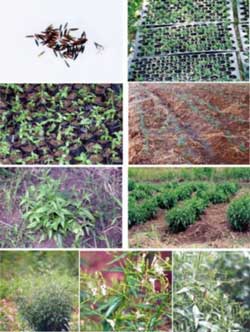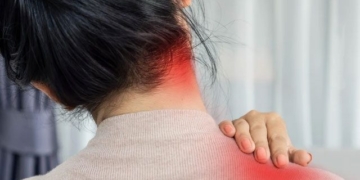Due to the easy availability of synthetic antibiotics, Andrographis Paniculata (commonly known as Chuanxinlian) is gradually being forgotten in Vietnam. Meanwhile, in Europe and North America, many doctors and pharmaceutical companies dream of obtaining a herbal remedy similar to this medicinal plant.
 The plant, scientifically known as Andrographis Paniculata, was once a staple in family medicine cabinets, clinics, and even some hospitals in our country. It has been used as an alternative to antibiotics for many illnesses accompanied by fever caused by both bacteria and viruses. Andrographis is a tonic for those suffering from general weakness and is considered a miracle cure for fever-related diseases, as well as liver and eye conditions. Indian physicians utilize it in prescriptions for treating vitiligo, digestive disorders in children, to stimulate digestion, and to treat common parasitic infections.
The plant, scientifically known as Andrographis Paniculata, was once a staple in family medicine cabinets, clinics, and even some hospitals in our country. It has been used as an alternative to antibiotics for many illnesses accompanied by fever caused by both bacteria and viruses. Andrographis is a tonic for those suffering from general weakness and is considered a miracle cure for fever-related diseases, as well as liver and eye conditions. Indian physicians utilize it in prescriptions for treating vitiligo, digestive disorders in children, to stimulate digestion, and to treat common parasitic infections.
Traditional Chinese medicine emphasizes the heat-clearing and detoxifying effects of Andrographis, especially for respiratory diseases, ear, nose, and throat conditions, urinary tract infections, intestinal and gastric inflammation, acute dysentery, skin inflammation, pharyngitis, laryngitis, and boils. According to Professor Do Tat Loi, Andrographis can be used topically to treat snake bites and joint pain. In Central Vietnam, people use this plant as a tonic for postpartum women suffering from blood stasis, pain, and menstrual irregularities.
The experience of doctors and traditional medicine practitioners worldwide has shown that Andrographis is an effective remedy for treating infections caused by bacteria and viruses throughout all parts of the body, both chronic and acute. Four notable effects have been demonstrated in clinical studies and through the traditional medicine practices of various cultures worldwide: anti-inflammatory, detoxifying, enhancing immune response, and antibacterial and antiviral properties.
International medical journals have published several clinical studies on the medicinal effects of Andrographis:
For the common cold, a controlled trial by Burgos and colleagues with a dose of 1,200 mg of Andrographis per day—equivalent to 5-6 g of dried powder—showed strong efficacy in reducing typical symptoms of the common cold such as fever, headache, fatigue, insomnia, sore throat, and runny nose; it also decreased the intensity and frequency of coughing. Patients exhibited clear improvement after one day, with the most significant results observed after four days of treatment. The authors concluded that Andrographis is a cold remedy that works significantly better than known treatments and has no harmful side effects for patients.
Swedish studies have also demonstrated the promising effects of Andrographis against respiratory infections caused by bacteria and viruses. Two controlled clinical trials involving 46 and 179 patients showed that this herb significantly reduced symptoms and shortened the duration of illness compared to placebo or standard medications.
The clinical results indicate that Andrographis can be used for respiratory diseases such as colds, flu, bird flu, dengue fever, or viral meningitis.
In addition to the large-scale clinical trials mentioned, smaller reports from practicing physicians highlight the unique effects of Andrographis in many cases where modern antibiotics and anti-inflammatory medications have not provided the desired results. A summary of the clinical experiences of practitioners using this herb in Europe and North America reveals that Andrographis has effects such as: pain relief from joint and other infections; anticoagulant properties, breaking down blood clots; antiviral effects against HIV, hepatitis C, and herpes; laxative effects, expectorant properties, treating dermatitis, and periapical inflammation; promoting bile flow and protecting the liver, preventing fibrosis and carcinogenesis caused by experimental chemicals.
Andrographis has no harmful side effects. However, according to Eastern traditional medicine, this herb has a cooling nature, so individuals exhibiting signs of deficiency should avoid high doses.
Dr. Hoang Xuan Ba, Health & Life


















































